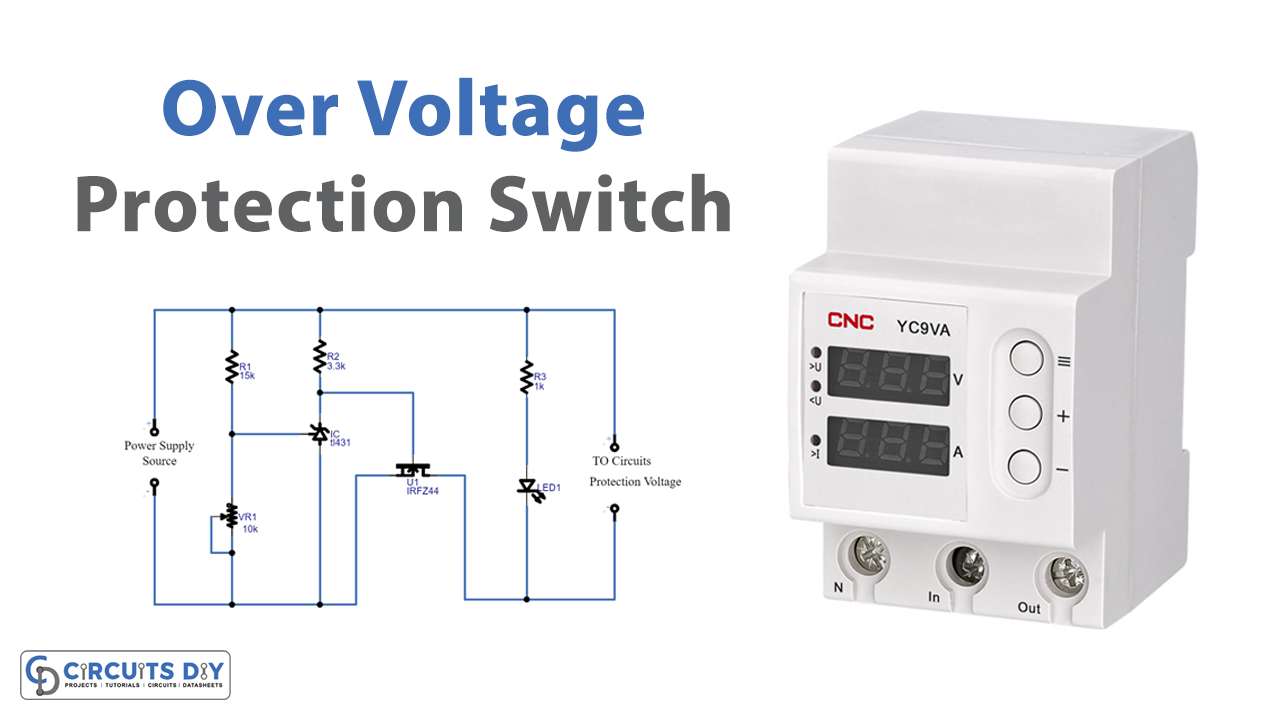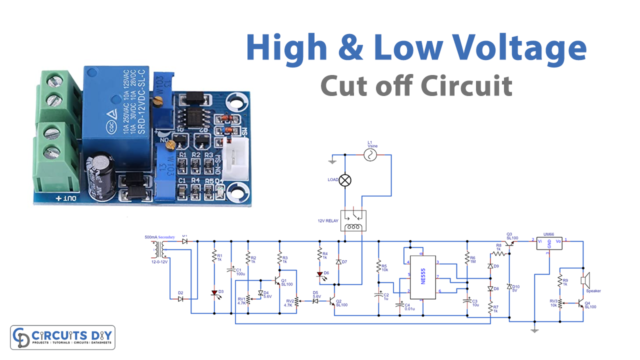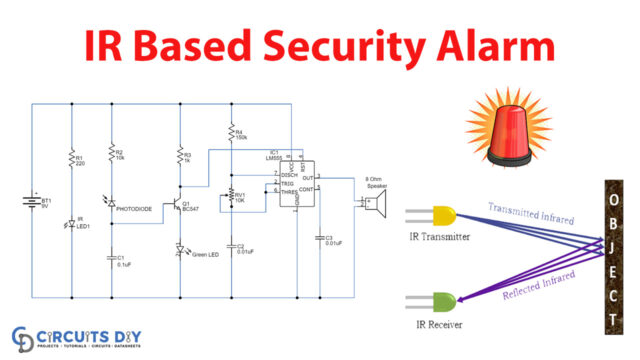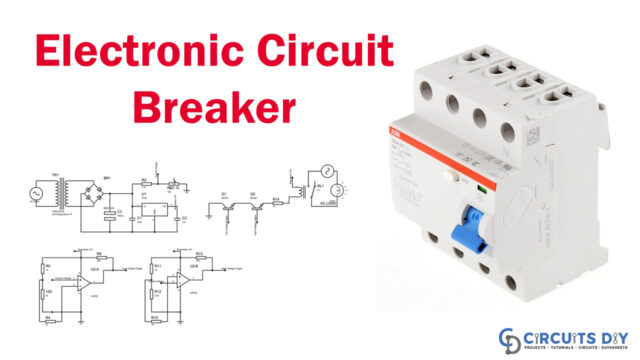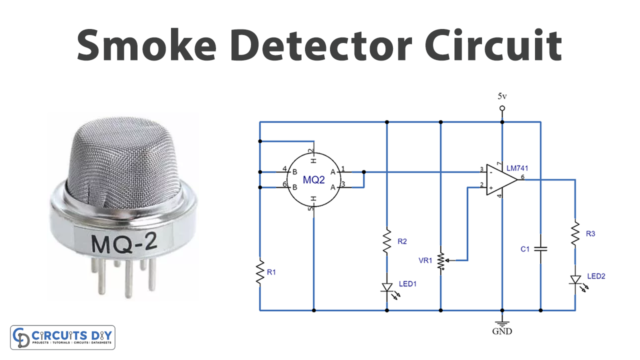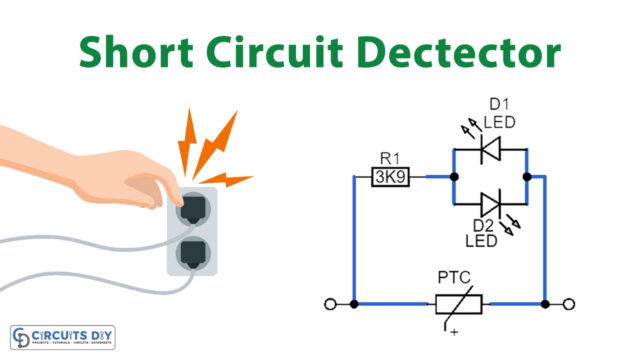Multiple appliances have been developed to ease human efforts. And in the same run, numerous protective circuits are designed to ensure a long lifespan of those devices. We have seen those circuits claiming to protect appliances like refrigerators and air-conditioners from voltage fluctuations and brown-outs. To avoid losses it is essential to protect the circuits effectively from overload occurrence, and it can be done using an overload protection circuit for sensitive electrical equipment.
Lighting or switching urges, or heavy load sudden interruptions might be the reasons for the overvoltage occurrence. It might damage the equipment, can cause fire, fails the transformer or machine, etc. Here a simple overvoltage protection circuit is built using a TL431 adjustable shunt regulator and MOSFET. The protection circuit is generally used in the main power supply, which shuts down the supply of voltage that exceeds the maximum bearing value of the electrical appliance or system.
Hardware Required
| S.no | Component | Value | Qty |
|---|---|---|---|
| 1. | Adjustable Shunt Regulator | TL431 | 1 |
| 2. | Device | TL431 | 1 |
| 3. | Resistor | 15KΩ,3.3KΩ,1KΩ | 1,1,1 |
| 4. | Variable Resistor | 10KΩ | 1 |
| 5. | LED | – | 1 |
| 6. | Connecting Wires | – | – |
Circuit Diagram
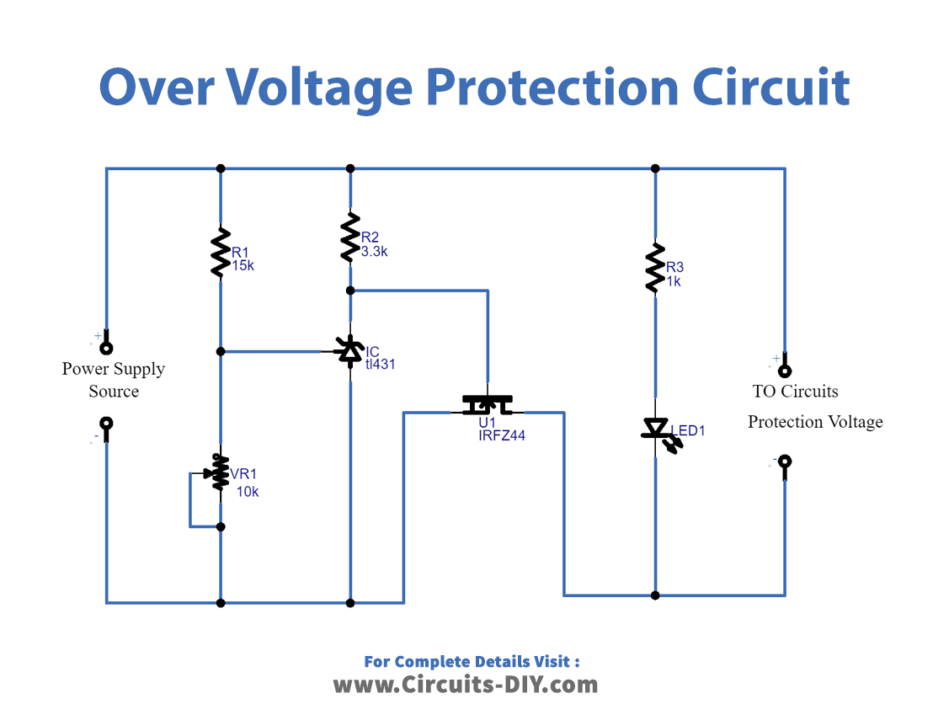
Construction and Working
As we can see, the main parts of the circuit are TL431 and MOSFET. The TL431 device has three terminals and the main application of this device is adjustable shunt regulation. The reference regulating voltage can be given through the cathode and reference pin. Here the VR1 variable resistor decides the regulation range, we can get a different range of regulating voltage by changing it. The LED1 gives status about the output voltage presence if the input voltage to this circuit goes beyond the limit that is overvoltage. It means the TL 431 blocks the voltage through MOSFET, hence the circuit connected with this setup is protected from overvoltage.
Applications
Modern power supplies are undeniably reliable in our day-to-day activities. However, chances are, they might fail due to factors like overvoltage. Therefore, it is necessary to have a means of overvoltage protection in homes and workplaces.

